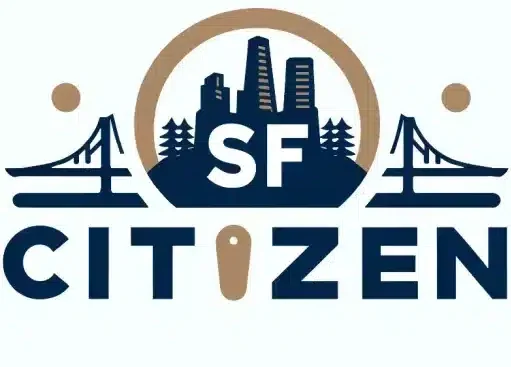San Francisco, a city known for its iconic landscapes, vibrant culture, and bustling urban life, faces unique challenges in maintaining its road infrastructure. The city’s streets connect people to places and provide mobility for transit riders, pedestrians, cyclists, and motorists. The San Francisco Department of Public Works (SFDPW) is responsible for maintaining approximately 850 miles of streets and roadways comprising 12,517 street segments.
In This Article
Key Points
- The role of the San Francisco Department of Public Works in road maintenance and infrastructure improvement
- The impact of road maintenance on traffic, public transportation, and urban planning
- Community engagement and funding strategies for effective road maintenance in San Francisco
The San Francisco Department of Public Works: Guardian of City Streets
Overview of the Department
The SFDPW’s mission is to keep the city’s streets safe, smooth, and accessible for all users. They adhere to best industry practices by preserving streets in good condition instead of letting them deteriorate, as this approach is the most cost-effective and efficient.
Road Repair and Maintenance Strategies
- Pothole repair and street resurfacing projects: Over the past 10 years, 500 or more blocks have been resurfaced annually in San Francisco.
- Emergency road services and infrastructure resilience: The SFDPW maintains street structures including bridges, stairways, retaining walls, underpasses, overpasses, guardrails, and tunnels.
Innovations in Road Maintenance
- Sustainable practices and environmental impact considerations: The SFDPW implements green infrastructure in road maintenance projects and promotes sustainable urban infrastructure.
- Use of technology for roadwork updates and public feedback mechanisms: The city provides real-time road closure alerts, traffic advisories, and mechanisms for community reports on street damage.
Traffic and Transportation: Navigating Through Roadwork
Traffic Disruption and Management
Road maintenance projects can cause traffic disruptions, but the SFDPW employs strategies to minimize these effects, such as:
- Coordinating with public transportation agencies for alternative routes
- Providing real-time roadwork updates and traffic advisories to the public
Public Transportation and Roadwork
Road maintenance can impact public transportation routes and schedules. The SFDPW works closely with transit agencies to ensure minimal disruptions and provide alternative routes when necessary.
Pedestrian and Cyclist Considerations
The SFDPW prioritizes the maintenance of pedestrian pathways and bicycle lanes to ensure safety and accessibility for all road users. They implement safety measures and accessibility improvements during road maintenance projects.
Urban Planning and Infrastructure Improvement
Long-Term Urban Planning Strategies
Road maintenance plays a crucial role in urban planning and development. The SFDPW collaborates with other city agencies to align road maintenance efforts with long-term infrastructure improvement projects.
Road Safety and Community Well-being
Effective road maintenance enhances community safety by implementing road safety measures and improving pedestrian and cyclist infrastructure. Well-maintained streets contribute to overall community well-being.
Funding and Policy for Road Maintenance
Road maintenance in San Francisco is funded through various sources, including city budgets, state and federal funds, and other financial mechanisms. The city adheres to road maintenance policies and regulatory frameworks to ensure consistent and efficient maintenance practices.
Community Engagement and Civic Participation
Reporting and Addressing Street Damage
San Francisco residents can report potholes or street damage through various channels, such as the SF1 service. The SFDPW encourages civic engagement in road maintenance planning and seeks public feedback to improve their services.
Community Impact and Benefits
Effective road maintenance benefits the community by ensuring safer, smoother, and more accessible streets for all users. The SFDPW engages with the community to understand their needs and concerns regarding road maintenance.
Environmental and Sustainability Considerations
Environmental Impact of Roadwork
The SFDPW assesses and mitigates the environmental impacts of road maintenance projects. They implement sustainable practices to minimize the ecological footprint of roadwork.
Green Infrastructure and Road Maintenance
The integration of green infrastructure in road maintenance projects, such as permeable pavements and bioswales, helps manage stormwater runoff and promotes environmental sustainability.
FAQ
What is the role of the San Francisco Department of Public Works in road maintenance?
The SFDPW is responsible for maintaining and improving the city’s road infrastructure, including pothole repair, street resurfacing, and emergency road services.
How can residents report potholes or street damage in San Francisco?
Residents can report road damage through the SF1 service, either by calling 311, using the SF1 mobile app, or submitting an online request.
How does road maintenance affect traffic and public transportation in San Francisco?
Road maintenance projects can cause traffic disruptions and impact public transportation routes. The SFDPW works to minimize these effects by coordinating with transit agencies and providing real-time updates to the public.
How is road maintenance funded in San Francisco?
Road maintenance in San Francisco is funded through a combination of city budgets, state and federal funds, and other financial mechanisms, such as the Safe Streets and Road Repair General Obligation Bond.
What measures are taken to ensure road safety during and after road maintenance projects?
The SFDPW implements safety measures and standards during road maintenance projects to protect workers, residents, and commuters. These measures include proper signage, traffic control, and adherence to safety regulations.

